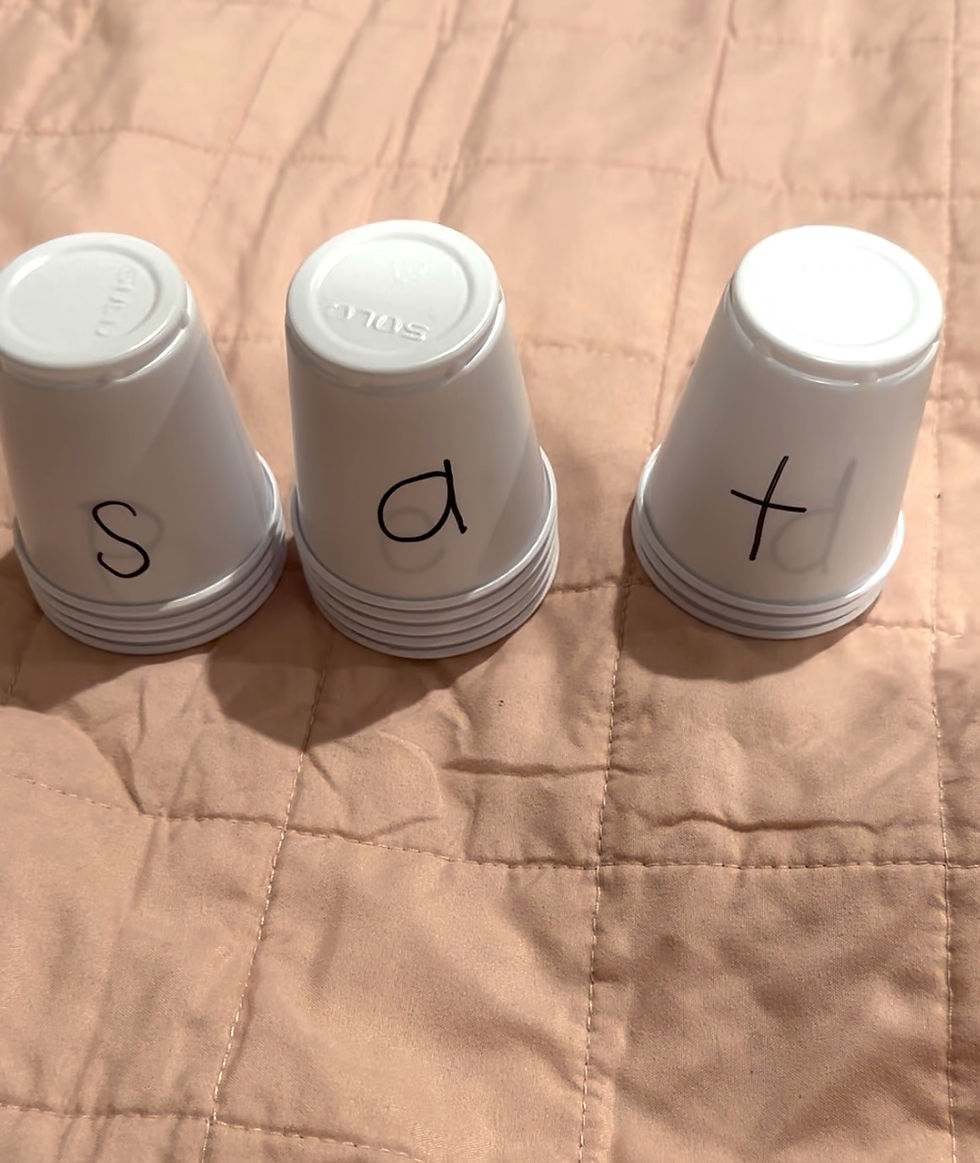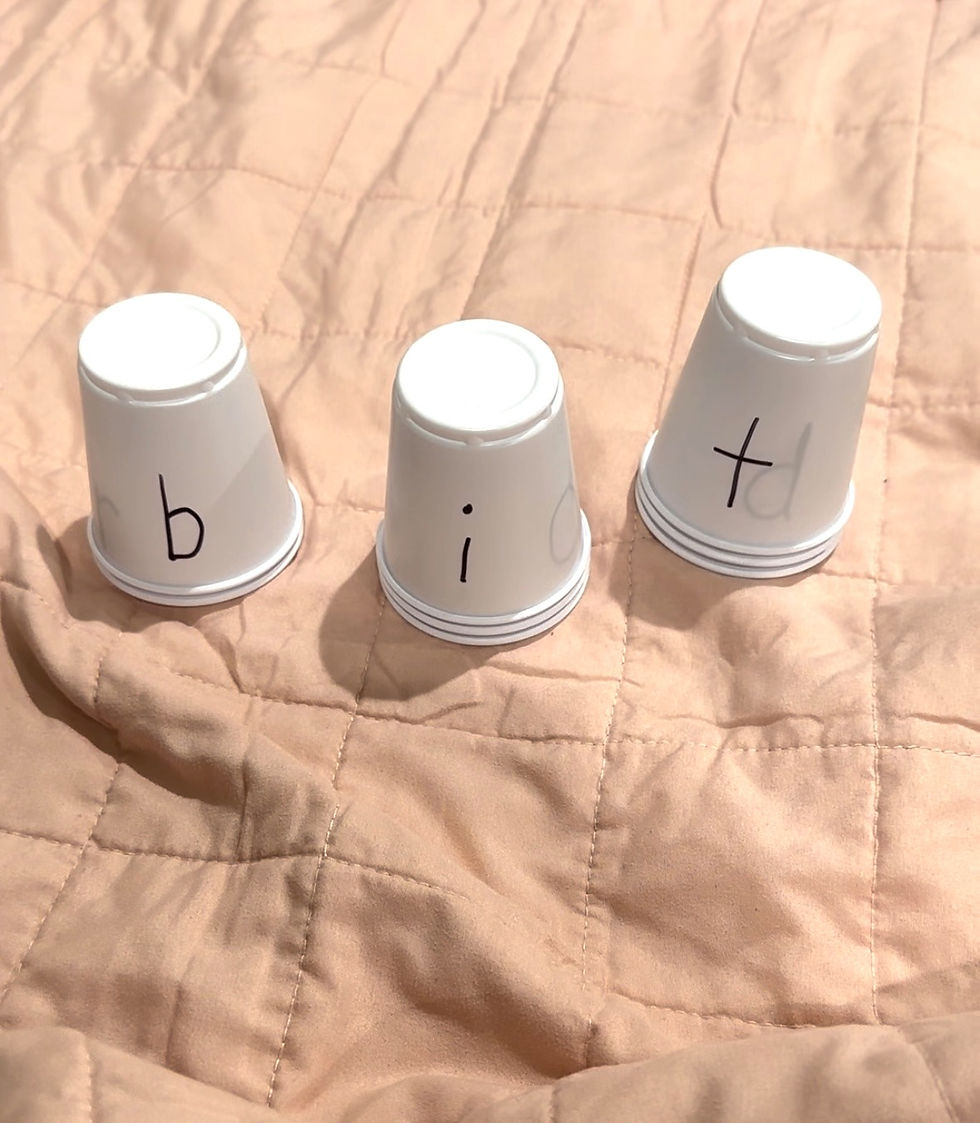Reading is not a skill that comes naturally to all children and requires frequent & consistent phonics work to become fluent. However, it does not always have to feel like work! There are multiple ways that you can work on foundational skills to help your reader that are fun & use items that are most likely already in your home!
Differentiating vowel sounds is tricky!! The more they interact with, manipulate & practice saying the sounds, the more automatic it will become. This will help to increase reading fluency!
See it in action HERE!

Materials:
Plastic, styrofoam, or paper cups
Sharpie marker
How-to:
Using 5 cups, write the 5 vowels on the middle of these cups (a, e, i, o, u).
Create two other stacks of a variety of consonants.
Set the stacks out in order of consonant, vowel, and consonant.
Have your reader read the word in front of them
Change one cup (or multiple!)
Read the new word!
Continue changing the cups to make more words.

Learning should be FUN! Using activities like this one feels more like a game rather than work! While they are playing, children are blending the sounds of letters to create simple words. Since the words change each round, the reader has to sound out and blend the word and not rely on memorized words. Some of the words are REAL and some are NON-SENSE words.
What's a nonsense word?
A nonsense word is a silly, made-up word that have no meaning. They can be used to practice important early-literacy skills. This is SO helpful for early readers because it’s forces them to use letter-sound knowledge to accurately sound out & blend the word together to read. They can’t guess or try to memorize the pattern.

What should you do before this word work activity?
Before an activity like this is introduced, your learner should have been exposed to the consonant & vowel sounds on the cups.
Each letter sound should have been taught in isolation (alone) first.
Practice oral blending (saying the sounds aloud & then merging the sounds together). This is called phonemic awareness: there is no written component here!
Practice common word families: -at, -it, -en, in order to begin to recognize spelling patterns within words.
What are the benefits?
Hands-on learning activities provide children with an opportunity to make connections to what they are learning.
While they learn, they are strengthening hand-eye coordination & strengthening fine motor skills.
As they strengthen letter-sound correspondence, they are increasing their fluency.
Frequent exposure to activities like this will help children to pick up on spelling patterns.
Want to extend your learning?
Download our FREE word family lists to challenge your learner to practice different words.
Once your child feels successful with these words, begin to work on chunking the middle and ending sound together. For example, read the above word as /b/ /it/.
Have your child read the word. Ask them to change the beginning sound without changing the cup: the word is /bit/. Change the /b/ to a /s/. What is the word?
HAVE FUN! This activity is perfect to use at home, in the classroom or on-the-go! Tuck it in your bag & practice while waiting in a restaurant, in a doctors office or at a siblings sporting event!
Comentarios